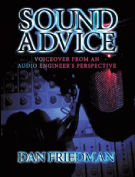It was a pleasure speaking with everyone at the Charlotte Voiceover Meetup Group last night.
Big thanks to:
Gabrielle Nistico of Voicehunter.com
Beverly Penninger of Naka Productions
and
Eric Simendinger of Voicehunter.com
Also, thank you to all of the new and experienced talent who participated in the event. It was a pleasure meeting you and I look forward to hearing all of you in the near future.
Dan
 Two of the biggest ongoing issues in the voiceover world are gear and rates. It seems that
Two of the biggest ongoing issues in the voiceover world are gear and rates. It seems that  I recently wrote a blog post entitled:
I recently wrote a blog post entitled: 

 Last night I had the opportunity to spend some time with one of my Faffcon friends
Last night I had the opportunity to spend some time with one of my Faffcon friends 


